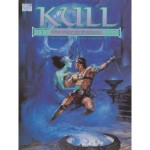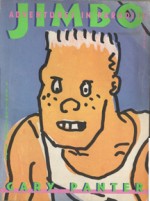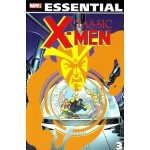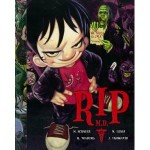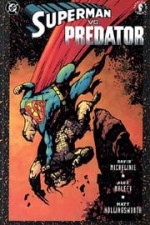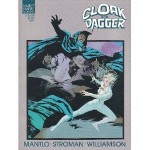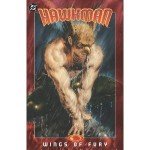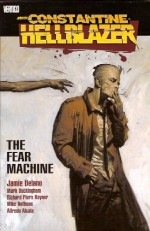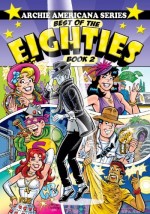
By Frank Doyle, George Gladir, Dan DeCarlo, Stan Goldberg & various (Archie Comics Publications)
ISBN: 978-1-879794-58-0
For most of us, when we say comicbooks people’s thoughts turn to buff men and women in garish tights hitting each other and lobbing trees or cars about, or stark, nihilistic crime, horror or science fiction sagas aimed an extremely mature and sophisticated readership of confirmed fans – and indeed that has been the prolific norm of late.
For many years however, other forms and genres have waxed and waned, but one that has held its ground over the years – although almost now completely transferred to television – is the teen-comedy genre begun by and synonymous with a carrot topped, homely (at first just plain ugly) kid named Archie Andrews.
MLJ were a small publisher who jumped wholeheartedly onto the superhero bandwagon following the debut of Superman. In November 1939 they launched Blue Ribbon Comics, promptly following with Top-Notch and Pep Comics. The content was the common blend of costumed heroes, two-fisted adventure strips and one-off gags. Pep made history with its lead feature The Shield, who was the industry’s first super-hero to be clad in the flag (see America’s First Patriotic Hero: The Shield).
Even while profiting from the Fights ‘N’ Tights crowd Maurice Coyne, Louis Silberkleit and John Goldwater (hence MLJ) spotted a gap in their blossoming market and in December 1941 the action strips were supplemented by a wholesome ordinary hero; an “average teen†who had ordinary adventures like the readers, but with the laughs, good times, romance and slapstick heavily emphasised.
Pep Comics #22 introduced a gap-toothed, freckle-faced, red-headed goof showing off to the pretty blonde next door. Taking his lead from the popular Andy Hardy movies starring Mickey Rooney, Goldwater developed the concept of a wholesome youthful everyman protagonist, tasking writer Vic Bloom and artist Bob Montana with the job of making it work. It all started with an innocuous six-page tale entitled ‘Archie’ which introduced boy-goofball Archie Andrews and pretty girl-next-door Betty Cooper. Archie’s unconventional best friend and confidante Jughead Jones also debuted in that first story as did the small-town utopia of Riverdale.
It was an instant hit and by the winter of 1942 had graduated to its own title. Archie Comics #1 was the company’s first non-anthology magazine and began the slow transformation of the entire company. With the introduction of rich, raven-haired Veronica Lodge, all the pieces were in play for the industry’s second Phenomenon (Superman being the first).
By May 1946 the kids had taken over, and the company renamed itself Archie Comics, retiring its heroic characters years before the end of the Golden Age and becoming to all intents and purposes a publisher of family comedies. Its success, like the Man of Steel’s, changed the content of every other publisher’s titles, and led to a multi-media industry including TV, movies, pop-songs and even a chain of restaurants.
Those costumed cut-ups have returned on occasion (see High Camp Superheroes), but the company now seems content to license them to DC whilst they concentrate on what they do uniquely best.
Archie is a good-hearted lad lacking common sense, Betty the pretty, sensible girl next door, with all that entails, who loves the ginger goof. Veronica Lodge is rich, exotic and glamorous and only settles for our boy if there’s nobody better around. She might actually love him too, though. Archie, of course, can’t decide who or what he wants…
This family-friendly eternal triangle has been the basis of seventy years of charming, raucous, gentle, frenetic, chiding and even heart-rending comedy encompassing everything from surreal wit to frantic slapstick, as the kids and an increasing cast of friends grew into an American institution. Adapting seamlessly to every trend and fad of the growing youth culture, the host of writers and artists who’ve crafted the stories over the decades have made the “everyteen†characters of mythical Riverdale a benchmark for youth and a visual barometer of growing up.
Archie’s unconventional best friend Jughead Jones is Mercutio to Archie’s Romeo, providing rationality and a reader’s voice, as well as being a powerful catalyst of events in his own right. That charming triangle (and annexe) has been the rock-solid foundation for decades of comics magic. Moreover the concept is eternally self-renewing…
Archie has thrived by constantly reinventing its core characters, seamlessly adapting to the changing world outside its bright, flimsy pages, shamelessly co-opting youth, pop culture and fashion trends into its infallible mix of slapstick and young romance.
Each and every social revolution has been painlessly assimilated into the mix (the company has managed to confront a number of social issues affecting the young in a manner both even-handed and tasteful over the years) and the constant addition of new characters such as African-American Chuck – who wants to be a cartoonist – his girlfriend Nancy, fashion-diva Ginger, Hispanic couple Frankie and Maria and a host of others such as spoiled home-wrecker-in-waiting Cheryl Blossom all contributed to a broad and refreshingly broad-minded scenario. In 2010 Archie jumped the final hurdle with Kevin Keller, an openly gay young man and a clear-headed advocate capably tackling and dismantling the last major taboo in mainstream kids comics.
This second 1980s compendium collects a few further gems from the Era of Excess: Big Hair, make-up for Men, synth-pop music, Fashion Victims and Fad madness all playing heavily to the crowd and playing very funnily indeed. After an introduction from Glenn Scarpelli, (son of comic artist Henry and himself a recovering child-star of an Eighties sit-com) the merriment commences with ‘Health Nuts’ (from Betty & Veronica #302, February 1981) by Frank Doyle, Dan DeCarlo & Rudy Lapick wherein spoiled Veronica pops into the new ultra-swish Health Club to be stylish, but receives a rather destabilising shock after which ‘A Zest for the West’ (Pep #374, June 1981, George Gladir, Stan Goldberg & Bill Yoshida) finds school principal Mr. Weatherbee railing in vain against the inexorable tide of cowboy fashions following America’s rediscovery of all things Country and Western…
Video games and especially Mall Games Arcades began seducing kids at this time and ‘Test Zest’ (Betty & Veronica #312, December 1981 by Gladir & Dan DeCarlo Jr.) found Archie ignoring both his dream-dates for the bleeping boxes. However, where Ronnie spits and pouts, Betty found a way to turn the situation to her advantage, whilst Jughead proved that old-fashioned cunning beats speed, coordination and practise every time in ‘Game Acclaim’ from Archie’s Pals ‘N’ Gals #162 (January 1983 by Gladir, Goldberg & Rudy Lapick).
Another modern mainstay just beginning to proliferate was computers and Mr. Weatherbee made a grave mistake in ‘Input and Output’ (Archie & Me #140, August 1983, Doyle, Dan DeCarlo & Jimmy DeCarlo) when he let that Andrews boy program the school’s first ever bit of kit…
Stories regularly spoofed popular movies, TV shows and bands and in ‘Scheme Scamp’ (Archie #327, January 1984, by Gladir & DeCarlo Jr.) our hero and scurvy rich-kid rival Reggie battled long and hard to secure an interview for the school paper with hot girl band “the Ga-Ga’s†(don’t make me feel even older by having to explain the pun…)
After ‘Krazy Knits’ a pin-up of the Boys of Riverdale modelling chunky sweaters by Dan Decarlo Jr., ‘Cable Caboodle’ (Archie’s Pals ‘N’ Gals #171, September 1984, Gladir & Goldberg) described the joys and pitfalls of the cable TV revolution, and the subsequent ‘A Flair for Wear’ from Everything’s Archie #116, March 1985 by Gladir & Goldberg, found occasional bubblegum pop-stars The Archies (remember the global hit “Sugar, Sugar†in 1969 – well that was technically them) making their first promotional video…
Still focusing on the music scene the Archies support King of Pop Jackie Maxon (think about it: he has sparkly clothes and weird pets) and end up trying to keep his diary out of the hands of sleazy reporters in ‘The Book’ (Archie’s TV Laugh-Out #100, April 1985, Gladir, Goldberg & Lapick) whilst ‘Fashion Frolic’ (Archie’s Pals ‘N’ Gals #176, July 1985, Gladir, Hy Eisman & Jon D’Agostino) saw Mr. Weatherbee trying to quell the outrageous clothes the kids in the cliques were wearing to class.
‘Dimrider’ (Archie’s TV Laugh-Out #102, August 1985) by Ed Berdej, Dan & James DeCarlo lambasted action blockbusters with chilling accuracy whilst ‘Delightful Dilemma’ (Archie Giant Series #550, August 1985 by Gladir, Dan DeCarlo Jr. & James DeCarlo) returned to the basics of Betty and Veronica duelling over their oblivious “Archie-kinsâ€.
‘Rock ‘n’ Rassle’ from Everything’s Archie #120 (November 1985, Gladir, Goldberg & Sal Trapani) referenced the revitalised, ultra-glamourised “sport†of televised wrestling and Punk hit Riverdale High hard in ‘Out of the Ordinary’ (Archie #354, January 1988 by Nate Butler, Dan DeCarlo Jr. & Jim DeCarlo) when our feckless star fell for leather-studded bad-girl Tina, leading to a startling new look for the freckle-faced fool…
Movie madness once more inspired mockery and mirth in ‘Robo-Teen’ (Laugh #13, April 1989, Gladir, Rex Lindsey & D’Agostino) as Archie suffered a tragic ski-boarding mishap before ‘Shlock Rock’ (Everything’s Archie #143, June 1989 by Gladir, Goldberg & Lapick) wraps up the reminiscent drollery with a barbed satire on the budding MTV generation.
These are some of the most effective and impressive stories from that brutal, bizarre decade, and by always concentrating on fashions, fads, and the eternal divide between rebellious teens and fun-thwarting adults achieves a kind of timeless permanence. Then is still now, due in large part to the overwhelming power of good writing and brilliant art, which will always captivate any audience of any age.
This is gentle fun and charming nostalgic delight for all ages so what are you waiting for? It’s not like it costs “Loadsamoney!â€
© 2010 Archie Comics Publications, Inc. All rights reserved.

